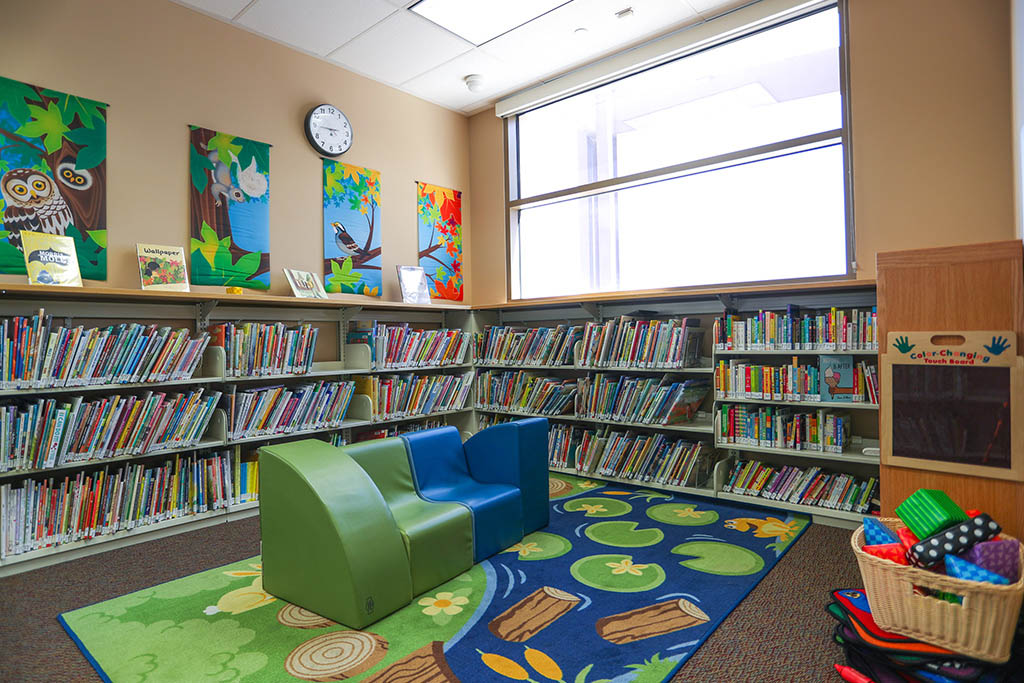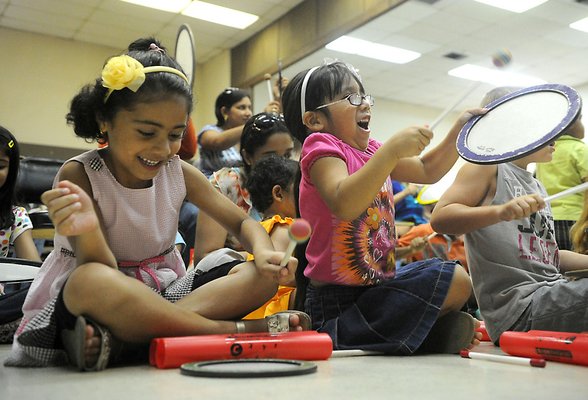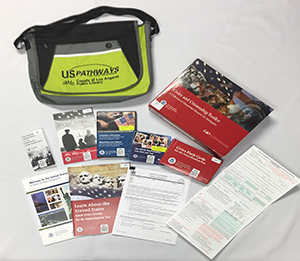Women’s History Month
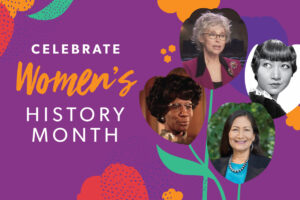 Honoring Women During Women’s History Month
Honoring Women During Women’s History Month
LA County Library is highlighting incredible women in history and their amazing, but sometimes unknown, contributions to their communities and the world.
Browse programs for all ages at our library locations, check out books from a specially curated booklist, and discover 4 changemakers highlighted by our Cultural Resource Centers.
Women Change Makers
Each of our Cultural Resource Centers has highlighted a courageous and influential woman for you to get to know.
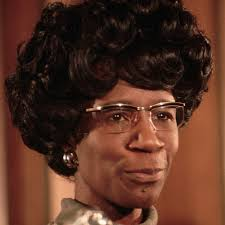
Shirley Chisholm Highlighted by our Black Resource Center
She represented New York’s 12th Congressional district for seven terms from 1969 to 1983. Chisholm was the first African American to seek the nomination for president of the United States from one of the major political parties.
Shirley Chisholm was born in Brooklyn, New York on November 30, 1924, to immigrant parents. She graduated from Brooklyn College and went on to work in education. In 1951 she earned her master’s degree in early childhood education from Columbia University. While working she was aware of racial and gender inequality and joined various organizations to combat these issues such as the NAACP, the Urban League, and the Democratic Party Club.
Chisholm ran for and became the second African American in the New York state legislature in 1964. Her ascension in politics continued in 1968 when she sought and won a seat in Congress. While there she introduced more than 50 pieces of legislation and continued to champion for gender and racial equality, rights for the poor, and ending the Vietnam War. In 1972 she sought the Democratic nomination for the presidency. Despite being blocked from participating in televised primary debates, she entered 12 primaries and received 152 of the delegates’ votes – 10% of the total!
In 1983 Shirley Chisholm retired from Congress. Afterwards she taught at Mount Holyoke College and co-founded the National Political Congress for Black Women. Congresswoman Chisholm continued to be unbought and unbossed as she was a catalyst for political change in the United States. She passed January 1, 2005, in Florida.
Children’s
She was the First!: The Trailblazing Life of Shirley Chisholm
Shirley Chisholm is a Verb!
Shirley Chisholm
Shirley Chisholm Dared: The Story of the First Black Woman in Congress
Loud and Proud: The life of Congresswoman Shirley Chisholm
Not Done Yet : Shirley Chisholm’s Fight for Change
Speak Up, Speak Out!: The Axtraordinary Life of “Fighting Shirley Chisholm”
Adult
Shirley Chisholm: A Bibliography of Writings By and About Her
The Good Fight.
The Highest Glass Ceiling: Women’s Quest for the American Presidency
Shirley Chisholm: The Last Interview and Other Conversations
Shirley Chisholm: Champion of Black Feminist Power Politics
Online
Biography: Shirley Chisholm
Shirley Chisholm for President
Shirley Chisholm: Unbought and Unbossed
CHISHOLM, Shirley Anita | US House of Representatives
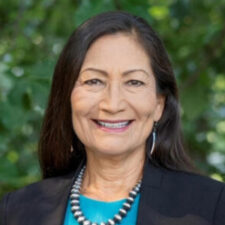
Deb Haaland Highlighted by our American Indian Resource Center
Debra Haaland is no stranger to breaking barriers. Haaland became one of the first Native American women to serve in Congress and made further history when she became the first Native American Cabinet Secretary.
Debra Haaland was born on December 2, 1960 in Winslow, Arizona to a military family. Her father was a 30-year combat Marine and her mother was a Navy veteran who worked at the Bureau of Indian Affairs for 25 years. Haaland is a member of the Laguna Pueblo people on her mother’s side and identifies as a 35th generation New Mexican. As a single mother, she supported herself through college and earned a Bachelor’s degree in English and a juris doctor in law from the University of New Mexico.
Haaland volunteered for multiple political campaigns in New Mexico and encouraged more Native Americans to vote. Though she ran for lieutenant governor and lost the election, she eventually won a seat in the United States Congress in 2018, representing New Mexico’s first congressional district. In 2021, she was selected by President Joe Biden as the Secretary of the Interior, becoming the first Native American to ever hold a cabinet position. Her choice of wearing traditional moccasins and a ribbon skirt to her swearing-in ceremony as Secretary of Interior made a powerful statement to Native Americans and was an indicator of how she would run the department.
Under Haaland’s leadership, the Department of Interior took on promoting environmental and equity initiatives. She focused on renewable energy and creating the Derogatory Graphic Names Task Force and the Advisory Committee on Reconciliation in Place Names to review and replace derogatory and racist names from Federal lands. Haaland created the Missing and Murdered Unit to investigate cases of missing and murdered American Indians and Alaska Natives. The Federal Indian Boarding School Initiative was also launched during Haaland’s term to address the history of Federal Indian boarding school policies impact on Indigenous Peoples and to promote healing in Indigenous communities. After her term as the Secretary of Interior, Haaland plans to run for Governor of New Mexico to continue her advocacy for New Mexico and Native Americans.
Books
Deb Haaland: First Native American Cabinet Secretary
Deb Haaland: U.S. Interior Secretary
Indigenous Peoples: Women Who Made a Difference by Katruna Philips
Native Women Changing Their Worlds by Patricia J. Cutright
Biography Article
Deb Haaland
Video
Interview with Deb Haaland

Anna May Wong Highlighted by our Asian Pacific Resource Center
Born Wong Liu Tsong in Los Angeles, she developed a passion for film at a young age and landed her first leading role in The Toll of the Sea (1922), one of the first color films. Her striking presence and talent gained attention, but she often faced the limitations of Hollywood’s racial stereotypes, which offered her roles as exoticized or tragic Asian women.
Despite these challenges, Wong built an international career, moving to Europe where she found greater opportunities and respect as an actress. She starred in British and German films, including Piccadilly (1929), and even worked with legendary filmmakers like Josef von Sternberg. Her return to Hollywood was marked by her powerful performance in Shanghai Express (1932) alongside Marlene Dietrich. Yet, Hollywood’s prejudice remained evident. She was famously denied the lead role in The Good Earth (1937), which instead went to a white actress in yellowface.
A determined advocate for better representation, Wong used her influence to challenge industry discrimination and portray Chinese and Asian characters with dignity. She also traveled to China in the 1930s to reconnect with her heritage, though she struggled with criticism from both Western and Chinese audiences over the roles she had played. During World War II, she supported the Chinese war effort and later transitioned into television, becoming the first Asian American to lead a U.S. TV show with The Gallery of Madame Liu-Tsong (1951).
Anna May Wong’s legacy endures as a symbol of resilience and progress for Asian American actors. While Hollywood frequently typecast her, she paved the way for future generations by refusing to accept roles that demeaned her culture and by proving that Asian performers could lead major productions. In 2022, she became the first Asian American to appear on U.S. currency, further cementing her impact on American history and cinema.
Books:
Not Your China Doll: The Wild and Shimmering Life of Anna May Wong By Katie Gee Salisbury
Daughter of the Dragon: Anna May Wong’s Rendezvous with American History By Yunte Huang
Anna May Wong: A Complete Guide to Her Film, Stage, Radio and Television Work By Philip Leibfried
Anna May Wong: From Laundryman’s Daughter to Hollywood Legend By Graham Russell Hodges
Perpetually Cool: The Many Lives of Anna May Wong (1905-1961) By Anthony B. Chan
Books for Youth:
The Story of Movie Star Anna May Wong By Paula Yoo
Shining Star: The Anna May Wong Story By Paula Yoo
The Women Who Built Hollywood: 12 Trailblazers in Front of and Behind the Camera By Susan Goldman Rubin
DVDs:
Anna May Wong in Her Own Words (2011), Documentary
Chu Chin Chow (1934)
Lady from Chungking (1943)
Shanghai Express (1932)A Study in Scarlet (1933)
The Thief of Bagdad (1924)
Video:
Picadilly (1929), starring Anna May Wong. Kanopy
“The struggles and breakthroughs of Chinese American movie star Anna May Wong.” PBS New Hour
“Anna May Wong: The First Chinese American Hollywood Star.” The New York Historical
Online Resources:
“Biography: Anna May Wong.” National Women’s History Museum
“How Anna May Wong Became the First Chinese American Movie Star.” The Bew Yorker
“A Biography Examines Anna May Wong, a Revered and Reviled Chinese American Star.” The New York Times
“Anna May Wong and Transnational Chinese Resistance.” History Workshop
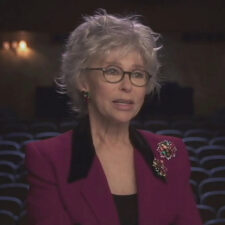
Rita Moreno Highlighted by our Chicano Resource Center
She is one of the few artists to have achieved EGOT status, winning an Emmy, Grammy, Oscar, and Tony. Moreno made dramatic history in 1961 when she was cast as Anita in West Side Story, a film adaptation of the Broadway musical. Her performance earned her an Academy Award for Best Supporting Actress, making her the first Latina actress to win an Oscar. Despite this milestone, Hollywood continued to offer her limited roles, reinforcing Latina stereotypes.
Frustrated with the lack of diversity, Moreno took a step back from films and turned her attention to television and theater. In 1975 she won a Tony award for her performance in the Broadway play The Ritz. She also made history with her Emmy Award winning appearances on The Muppet Show (1977) and The Rockford Files (1978). She was awarded a Grammy for her musical contributions to the popular children’s program The Electric Company. In the 1980s and 1990s, Moreno took on more diverse roles, appearing in films such as The Four Seasons (1981) and I Like It Like That (1994). She also had a significant presence on television, with recurring roles in Oz and One Day at a Time. Moreno used her platform to advocate for greater representation of Latinos in Hollywood and to mentor younger artists.
Moreno was born on December 11, 1931, in Humacao, Puerto Rico. At the age of five, Moreno moved with her mother to New York City. She was married to Leonard Gordon for over 40 years until his passing in 2010. She has a daughter, Fernanda Gordon Fisher. Moreno continues to be an advocate for social justice, women’s rights, and Latino representation in media. She has openly spoken about her struggles with Hollywood’s racial biases and the challenges she faced as a Latina actress navigating a predominantly white industry.
Books:
Rita Moreno : a memoir by Rita Moreno (also available on Hoopla)
Viva Hollywood : the legacy of Latin and Hispanic artists in American film by Luis Reyes
West side story : The Jets, The Sharks, and the making of a classic by Richard Barrios
Grandes dreamers: twelve fierce Latina trailblazers who paved the way in the United States by Argelia Atilano
Juvenile:
Rita Moreno by Susan Suntree
Rita Moreno : a Little Golden Book biography by Maria Correa
Una niña llamada Rosita : la historia de Rita Moreno: ¡actriz, cantante, bailarina, pionera! by Anika Denise (Spanish)
Music
West Side Story original motion picture soundtrack by Leonard Bernstein
Rita Moreno by Rita Moreno (Hoopla)
Una Vez Más by Rita Moreno
Film/TV:
West Side story (1961) original
Rita Moreno: Just a Girl Who Decided to Go for It by Mariem Riera
The complete third season, Disc 1by Ernie Hudson
West Side story (2021) Steven Spielberg (remake)
Extraordinary hispanic women by Rita Moreno (Hoopla Movie)
Background of Women’s History Month
March is Women’s History Month, a time to recognize, celebrate, honor and encourage the study of the contributions and achievements of women throughout history and all over the world. LA County Library is doing its part to celebrate with live virtual programming, booklists, and digital resources for all ages.
At first, this celebration of women’s history was only a week-long program, and it occurred in March 1978 in Sonoma County, California. Many people observed the program’s success, and other communities across the country initiated their own Women’s History Week.
The National Women’s History Project, now known as the National Women’s History Alliance, and other likeminded organizations successfully lobbied the federal government for national recognition of Women’s History Week in 1980.
In February of that year, President Jimmy Carter issued the first Presidential Proclamation declaring the Week of March 8, 1980 as National Women’s History Week (March 8 is International Women’s History Day).
Years later, President Ronald Reagan passed further proclamations announcing Women’s History Weeks. However, by then some areas had already extended their celebrations to a whole month. The Women’s National History Project lobbied for a longer observation, and Congress passed a proclamation in 1987 establishing Women’s History Month.
YouTube Videos
Work Ready: ART of Conquering Fear With Christy Demetrakis
Work Ready: Women Entrepreneurs Speak
Notable Black & African Americans in STEAM: Dr. Patricia Bath
Notable Black & African Americans in STEAM: Dr. Marie Maynard Daly
Notable Black & African Americans in STEAM: Bessie Blount Griffin
Notable Black & African Americans in STEAM: Gwendolyn Brooks
Digital Resources
OverDrive Women’s Studies (eBooks and Audiobooks)
Kanopy Women & Society (Movies)
Kanopy Movies Directed by Women (Movies)
Hoopla Women’s Fiction (Audiobooks)
Fighter: A Women’s History Month Freegal Playlist (Music)








